Rare Albino Redwoods May Hold Clues to Ecosystem Health
Once thought to be a burden to neighboring trees, these ‘ghosts of the forest’ may actually benefit them.
Thirty miles north of San Francisco, Tom Stapleton sets out on a trail that takes him deep into the forest, weaving around the massive trunks of redwoods. The trees have special significance for him. “Being in a redwood forest is actually like being in a cathedral,” he says. “There’s something that’s very spiritual, very humbling and moving there. It makes you seem so insignificant because you’re this human being that’s a tiny speck compared to these towering trees.” He veers off the trail, consulting a secret map that will lead him to the “ghosts of the forest.”
For decades, Stapleton has searched for and logged rare albino redwoods, their silver-white branches a stark contrast to the dark wood of the surrounding forest, and even less common wild chimera redwoods, which sport patchworks of green and white needle leaves. Collaborating with albino redwood researchers and enthusiasts,* he has found more than 500 albino redwoods and 116 wild chimeras. Their locations are kept secret to protect them from souvenir hunters or other vandals. Although curiosity and wonder drove his initial interest, Stapleton is now working with researchers to understand why these unusual trees exist, and what their presence may mean for the health of surrounding trees and even entire ecosystems.
For Stapleton, who works in a hydroelectric power plant and does not have a science degree, his long fascination with albino redwoods and their chimera kin began in 1996, when he was out hiking.

“It was pretty densely forested and I was looking down to this creek bed and I saw something kind of brilliant,” he says, recalling his first sighting of an albino redwood. “I was just enamored by it because of how beautiful it was. Here was this pure white foliage that has such a stark contrast to everything else. I just thought ‘Wow, this is the weirdest thing in the world.’”
He tried to learn more about what he’d seen, but information was scarce. He continued to look for other albino trees in the wild and, the following year, made a momentous discovery: a chimera redwood, with green and white needles on the same branch. The phenomenon, never before documented in a wild redwood, occurs because some of the tree’s cells have the mutation for albinism and others do not. “When I first saw it, I really had to do a double take,” Stapleton says. “I was just floored.”
Thrilled by his discovery, Stapleton contacted forester Dale Holderman, co-author of The White Redwoods: Ghosts of the Forest, the one book he’d found in the early days of his quest to learn about the trees. In previous cross-pollination experiments, Holderman had managed to breed chimera hybrids in controlled environments. He and Stapleton began collaborating, propagating those earlier hybrids and eventually patenting them with an eye toward potential commercial uses. Holderman passed away in 2016, but Stapleton maintains the nursery with their rare propagated chimeras, which have become an integral part of his collaborations with researchers.
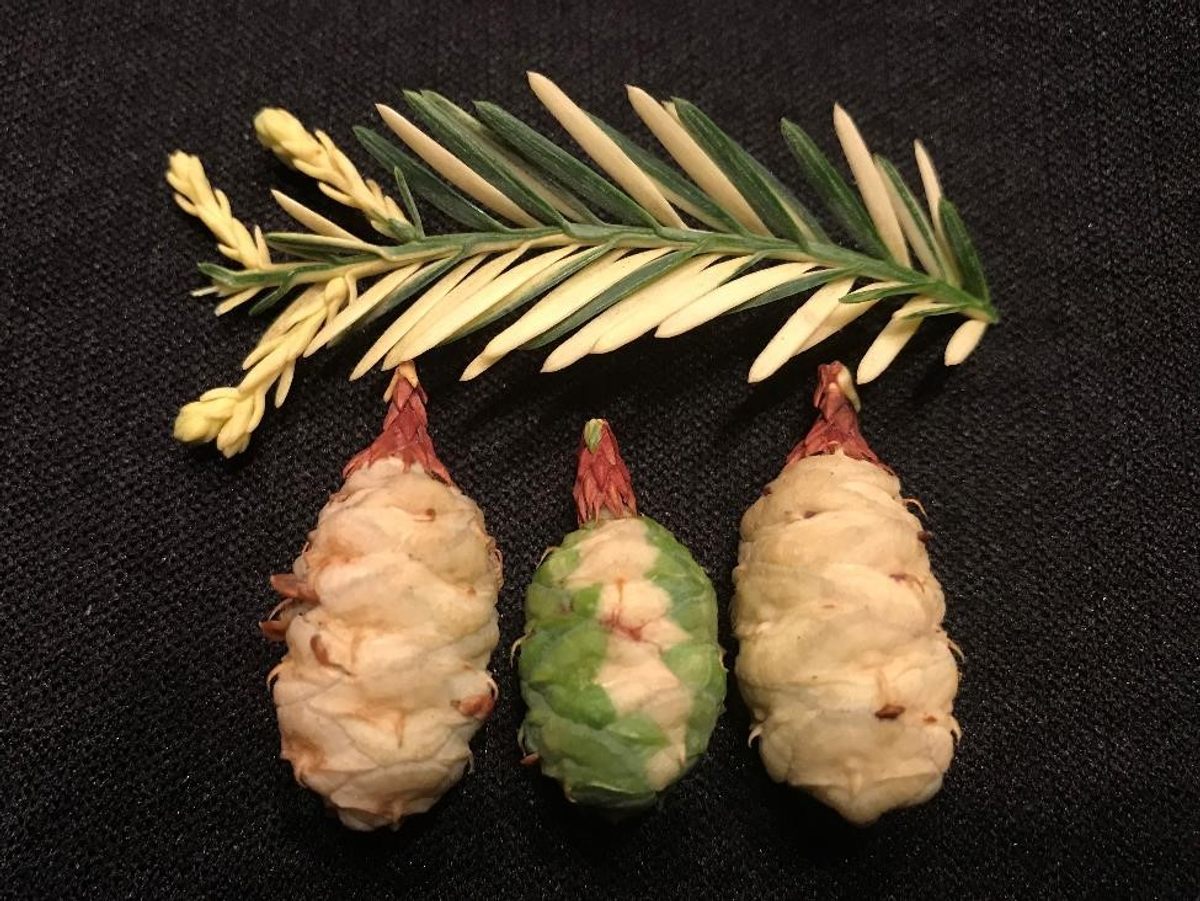
The value of these trees to science is rooted in the rarity of albinism within the plant kingdom. For redwoods, it occurs when a sucker—an offshoot of the parent plant—has a mutation that causes a lack of chlorophyll, the pigment that enables trees to produce energy. In short, albinism in plants should be a fatal flaw. But these bleach-white suckers share a root system with the parent plant, which allows them to siphon off nutrients and survive. While they don’t attain typical redwood heights, some albino suckers grow to about 30 feet tall, living in what appears to be a parasitic relationship with the parent tree. The mere existence of albino redwoods is a puzzle, because they long appeared to be a burden, without any benefit, to the parent plant.
It’s an evolutionary enigma that Stapleton and current collaborator Zane Moore are trying to solve. Moore, pursuing a doctorate in plant genomics at the University of California, Davis, previously analyzed tissue samples from both albino redwoods and their green neighbors. He discovered that the albinos were sucking up more than twice the volume of heavy metals, such as cadmium, copper, and nickel, compared with green redwoods in the same area.
Moore was aware of a phenomenon called hyperaccumulation: Several plant species have an adaptation that allows them to accumulate heavy metals so they become unpalatable to hungry herbivores. He thought something similar might be occurring in the albino redwoods, and that the ghostly white trees might actually be beneficial to the parent plant, sucking up and storing heavy metals and other toxins in their shared environment.
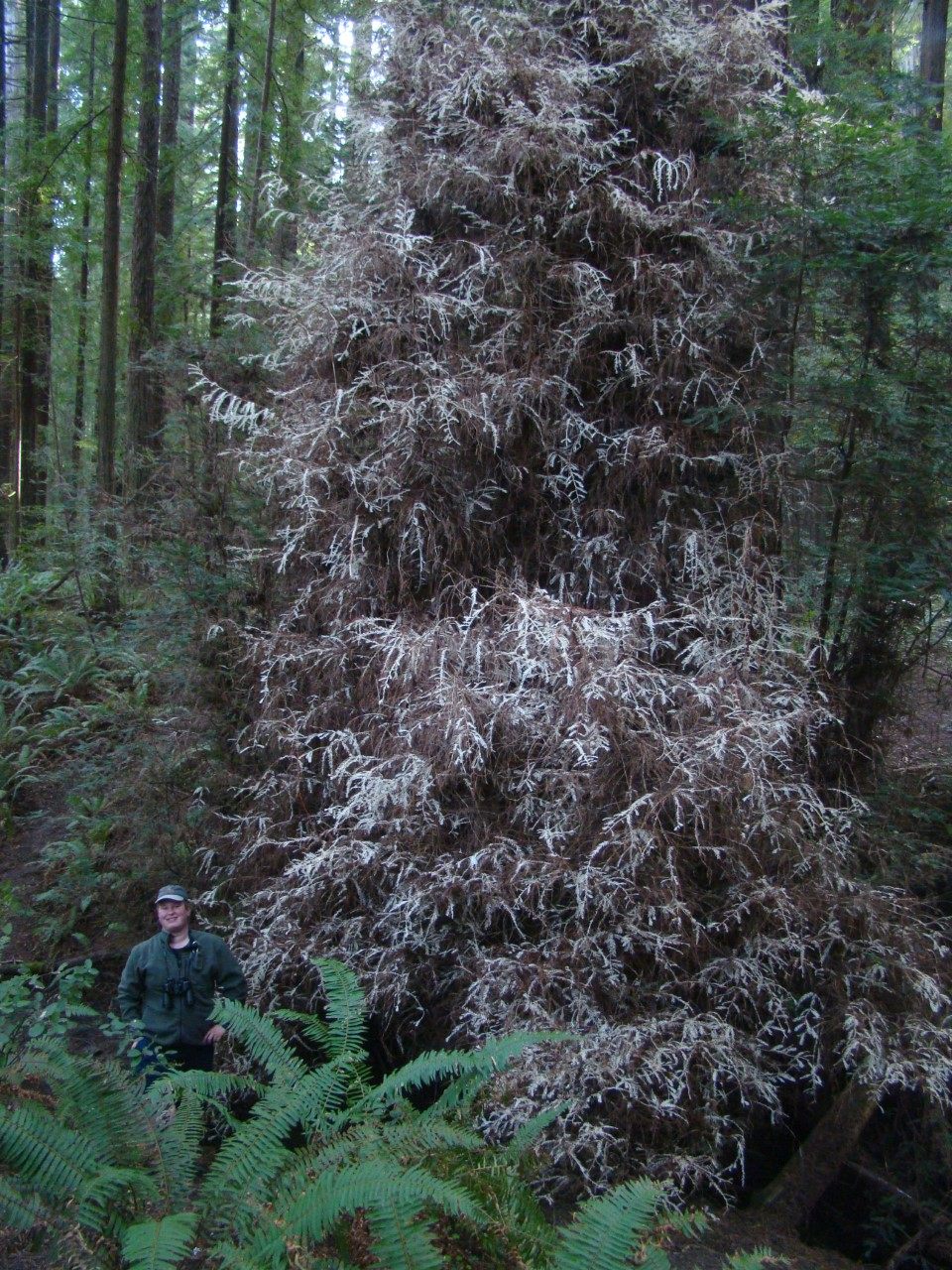
Moore and Stapleton say albino redwoods appear to be more common near areas of industrial activity, such as power plants or sewage treatment facilities. The two hypothesize that it’s possible pollutants from these sites are causing the redwoods to mutate more in the first place, which would cause more occurrences of albinism. In turn, the albino offshoots might help the parent plants by taking up more of the pollutants, in effect filtering them out of their shared root system.
To test this idea, they conducted an experiment using some of the propagated chimeras from Stapleton’s nursery. The chimeras, divided into groups, received different amounts of nickel sulfate, a heavy metal. Half of the trees also had their albino branches clipped. After three years, Stapleton measured the saplings’ growth and weight.
“We were trying to figure out if the green plants benefited from having albino branches,” says Moore. The data seemed to support their hypothesis. “With high levels of nickel, it looks like there was more tree growth and heavier weight when there was an albino attached,” Moore says.

While their findings, published on Stapleton’s website, provide some support for the idea that albinism might be beneficial for the parent plant, the results are preliminary and based on a small sample size of fewer than 20 saplings. It’s possible, Moore says, that the sulfate in the heavy metal they selected actually acted as a fertilizer and fueled growth. He hopes to repeat the experiment with more trees and a different heavy metal. “If we could do that, that would tie a real bow around this thing,” Moore says.
Jarmila Pitterman, a plant physiologist at University of California, Santa Cruz, has studied albino redwoods but was not involved in Stapleton and Moore’s experiment. She says their early results are “intriguing,” but notes that the findings are far from definitive. For example, Pitterman says, albino redwoods in general are inefficient at controlling water loss. To compensate, they suck up much more groundwater than their green counterparts do, which could explain why albino needles retain more heavy metals. She sees value in Stapleton and Moore’s work being replicated and expanded, adding, “The more that we learn about these trees the better.”
Stapleton also looks forward to more collaborative research in this area. He thinks the work may reveal what he already believes about the ghostly trees that have fascinated him for a quarter-century. “Albino redwoods are the white flags of the forest, surrendering to us their information on problems that may be in the environment,” Stapleton says. “I think there’s going to be a huge link between why we’re seeing albino redwoods and how we’re treating the environment.”
* Correction: This post previously suggested Stapleton found more than 600 albino and chimera redwoods on his own; locating the rare trees has been a team effort involving researchers and other individuals.
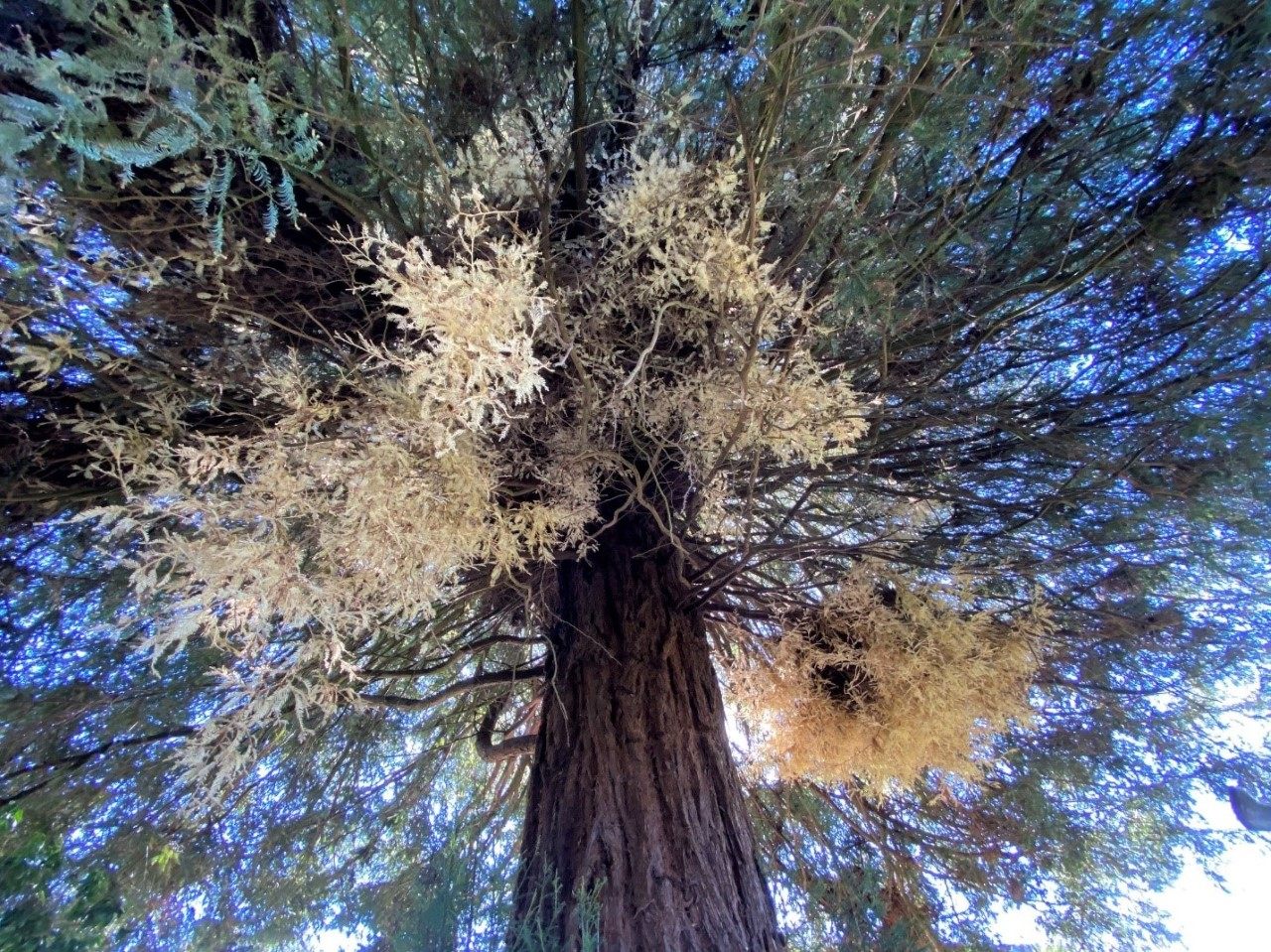

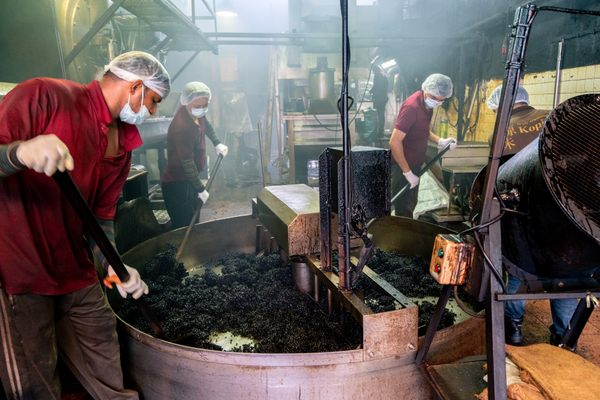


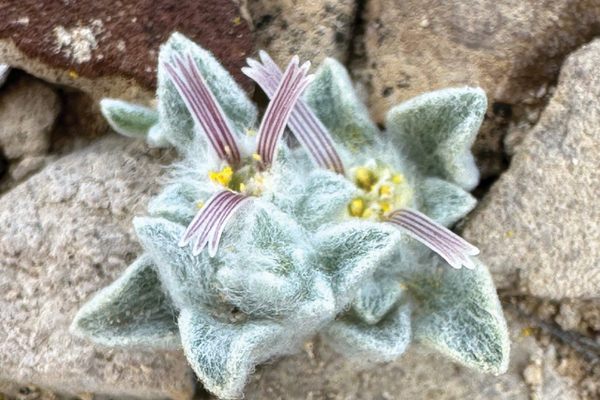












Follow us on Twitter to get the latest on the world's hidden wonders.
Like us on Facebook to get the latest on the world's hidden wonders.
Follow us on Twitter Like us on Facebook